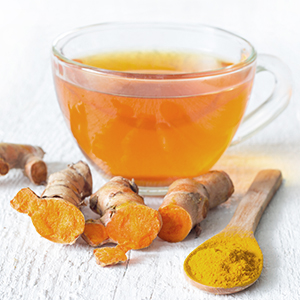Understanding Hirschsprung's Disease : Causes, Symptoms, and Treatment
 |
| What is Hirschsprung's Disease, Healthnews // iCliniq |
What is Hirschsprung's disease
Health news: Hirschsprung's disease, also known as congenital megacolon, is a rare but serious birth defect that affects the large intestine (colon) and causes problems with bowel movements.
Normally, the colon contains nerves that help move stool through the digestive system. In Hirschsprung's disease, these nerves are missing from a section of the colon, which causes a blockage and prevents stool from passing through. This can lead to chronic constipation, abdominal distension, vomiting, and other complications such as bacterial overgrowth in the colon and enterocolitis.
Hirschsprung's disease is typically diagnosed in infants and young children, but it can also be diagnosed in adults in rare cases. Treatment usually involves surgery to remove the affected portion of the colon and restore normal bowel function. With prompt diagnosis and treatment, most children with Hirschsprung's disease go on to lead healthy, normal lives.
Causes, Symptoms, and Treatment Options
The causes
The exact cause of Hirschsprung's disease is not entirely clear, but it is believed to result from problems with the development of the nerves that control the muscles of the colon. During fetal development, the nerves that control the colon grow from the upper end of the intestine to the lower end. In Hirschsprung's disease, these nerves stop growing or fail to develop in a certain section of the colon, which leads to a blockage or obstruction.
While the majority of cases of Hirschsprung's disease occur sporadically, some genetic mutations have been identified that can cause the condition. In some families, Hirschsprung's disease may be inherited in an autosomal dominant pattern, which means that a single copy of the mutated gene is enough to cause the condition. However, in most cases, the condition is thought to be caused by a combination of genetic and environmental factors.
There are also some risk factors that have been associated with an increased likelihood of developing Hirschsprung's disease, including being male, having Down syndrome, and having a family history of the condition.
R E A D :
- The Silent Agony: Unveiling the Mystery of Ménière's Diseas
- Unveiling the Mystery of Kawasaki Disease: A Rare and Serious Illnes
- Silent Killer Bacterial Meningitis Awareness and Prevention
The symptoms
The symptoms of Hirschsprung's disease can vary depending on the severity of the condition and the age of the individual affected. In some cases, the symptoms may be present at birth, while in other cases, they may not appear until later in childhood. Common symptoms of Hirschsprung's disease include:
- Failure to pass meconium (the first stool) within 48 hours of birth
- Chronic constipation
- Abdominal distension or swelling
- Diarrhea (in rare cases)
- Vomiting
- Poor feeding
- Slow growth
- Delayed or difficult toilet training
- Fecal impaction (hard stool stuck in the colon)
- Enterocolitis (inflammation or infection of the bowel).
If you or your child are experiencing any of these symptoms, it is important to see a healthcare provider as soon as possible for a proper diagnosis and treatment.
 |
| What is Hirschsprung's Disease, Healthnews // Netmeds |
Treatment method
The main treatment for Hirschsprung's disease is surgery to remove the affected portion of the colon and restore normal bowel function. The surgical procedure is known as a pull-through operation, and it involves removing the section of the colon that is missing nerves and connecting the healthy portion of the colon to the anus.
There are several types of pull-through procedures, and the specific type of surgery recommended will depend on the severity and location of the affected area. In some cases, the surgery can be done in one stage, while in other cases, it may require two or more stages.
In addition to surgery, other treatments may be necessary to manage symptoms and prevent complications. For example, laxatives and enemas may be used to help relieve constipation, and antibiotics may be prescribed to treat or prevent infections.
After surgery, most individuals will need to follow a specific diet and bowel management plan to prevent constipation and maintain regular bowel function. This may include a high-fiber diet, regular exercise, and medications to help regulate bowel movements.
With prompt diagnosis and appropriate treatment, the outlook for individuals with Hirschsprung's disease is generally good, and most are able to lead healthy, normal lives. However, ongoing monitoring and management may be necessary to prevent complications and ensure the best possible outcome.
> Hirschsprung's disease is a rare but serious birth defect that affects the large intestine and causes problems with bowel movements. It results from the absence or underdevelopment of nerves that control the colon's muscles. The condition can cause chronic constipation, abdominal distension, vomiting, and other complications. Diagnosis is usually made in infancy, but it can be diagnosed in adults as well. Treatment involves surgery to remove the affected portion of the colon and restore normal bowel function. Other treatments, such as laxatives and antibiotics, may be necessary to manage symptoms and prevent complications. With appropriate treatment and management, most individuals with Hirschsprung's disease can lead healthy, normal lives.












